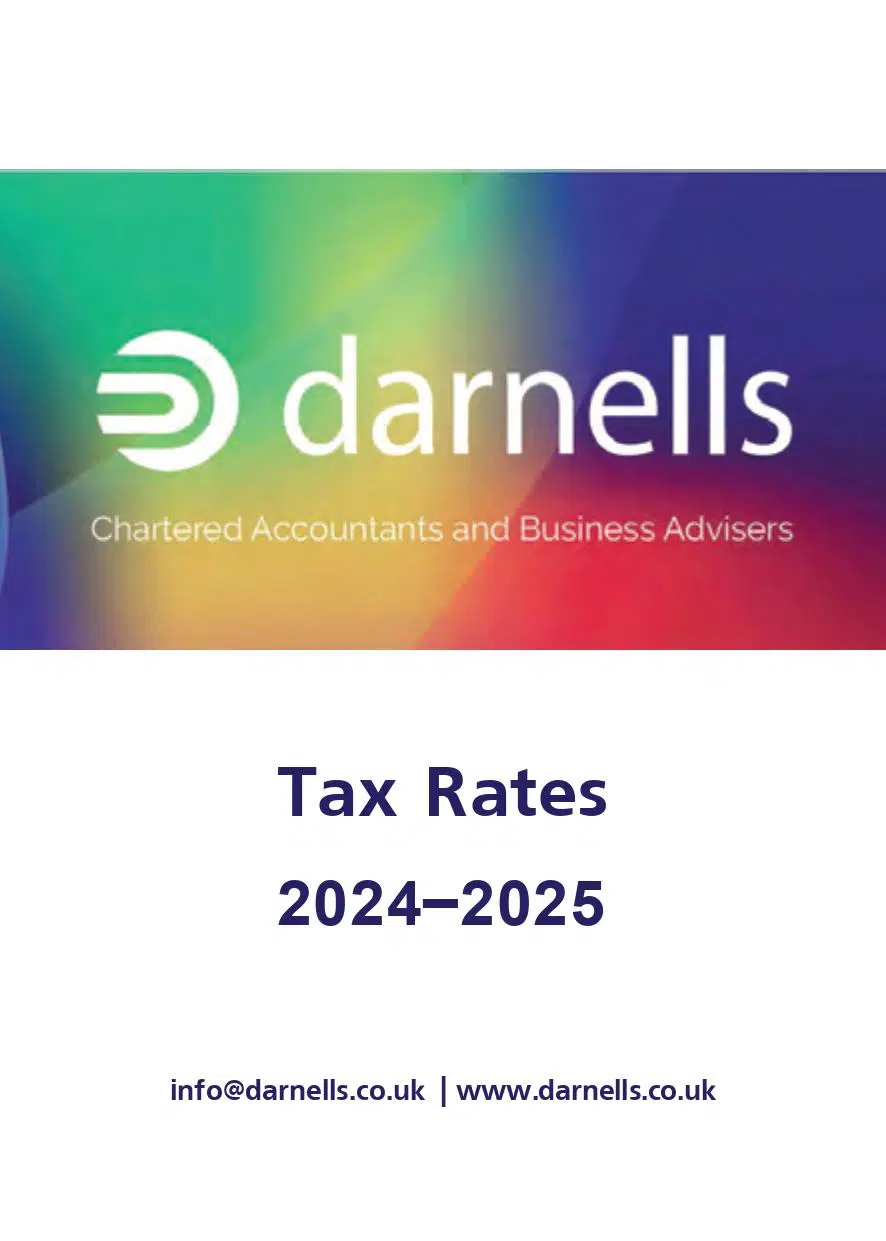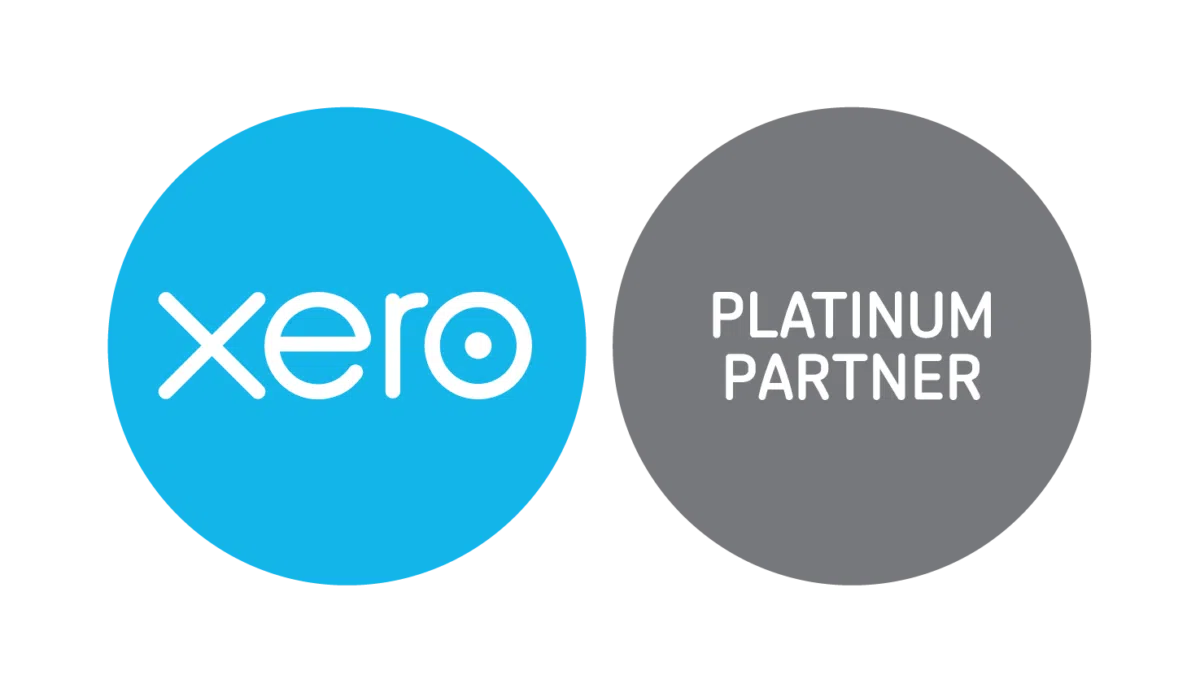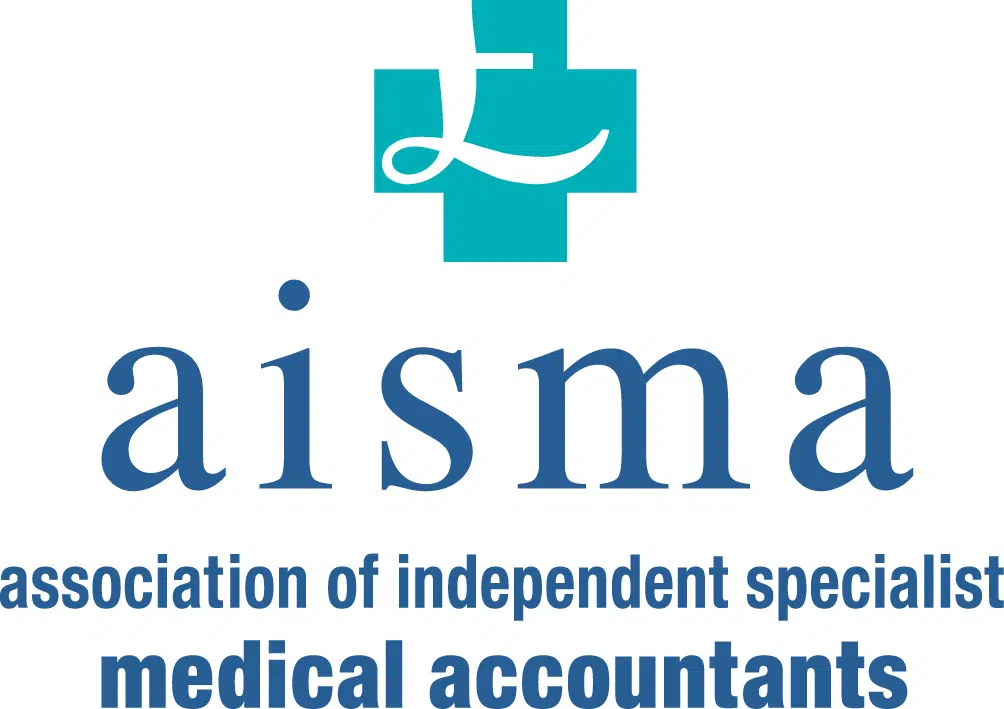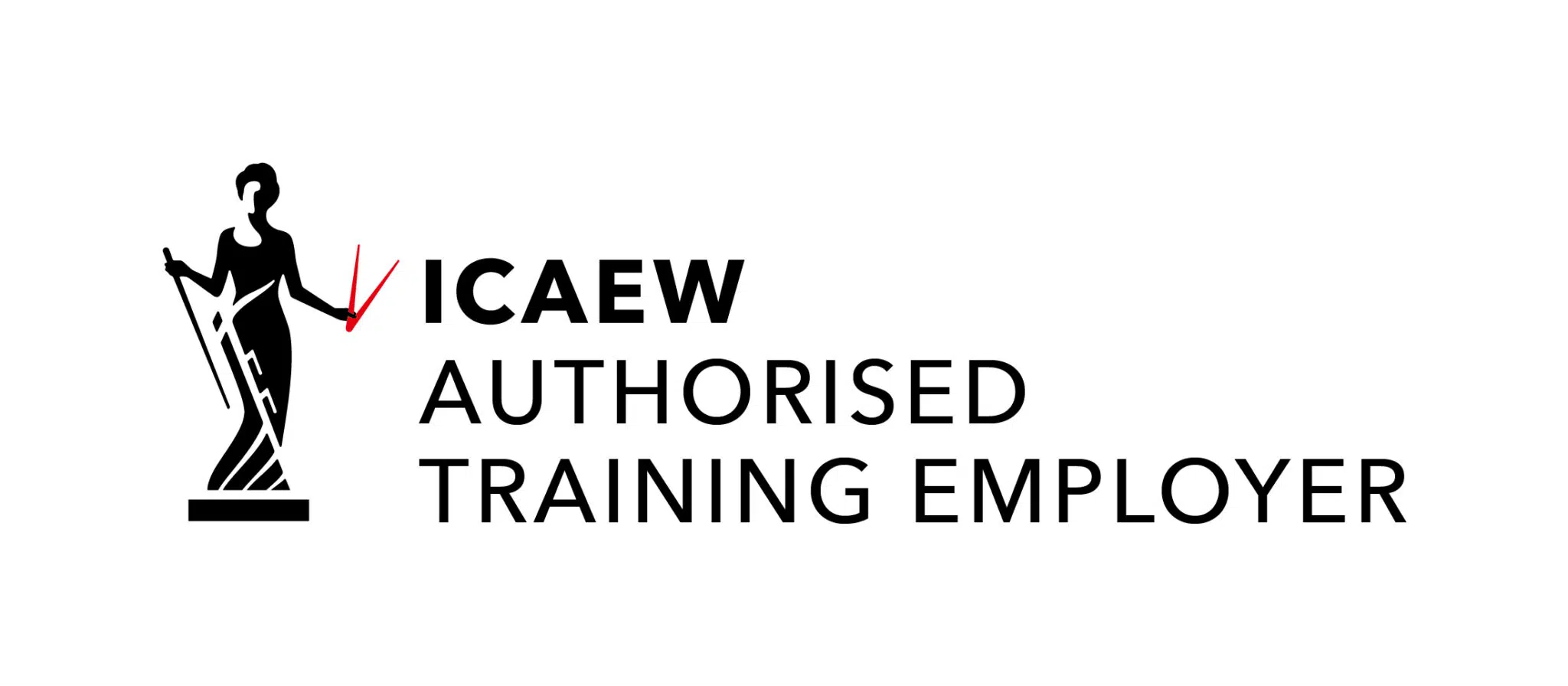Tax Rates 2024-2025
Published: 12th March 2024

Income Tax
Allowances 2024/25 2023/24
Personal Allowance (PA)* £12,570 £12,570
Marriage Allowance† 1,260 1,260
Blind Person’s Allowance 3,070 2,870
Rent a room relief** 7,500 7,500
Trading Income** 1,000 1,000
Property Income** 1,000 1,000
*PA is withdrawn at £1 for every £2 by which ‘adjusted income’ exceeds £100,000. There is no allowance given above £125,140.
†The part of the PA that is transferable to a spouse or civil partner who is not a higher or additional rate taxpayer.
**If gross income exceeds this, the limit may be deducted instead of actual expenses.
Rate bands 2024/25 2023/24
Basic Rate Band (BRB) £37,700 £37,700
Higher Rate Band (HRB) 37,701 – 125,140 37,701 – 125,140
Additional rate over 125,140 over 125,140
Personal Savings Allowance (PSA)
– Basic rate taxpayer 1,000 1,000
– Higher rate taxpayer 500 500
Dividend Allowance (DA) 500 1,000
BRB and additional rate threshold are increased by personal pension contributions (up to permitted limit) and Gift Aid donations.
Tax rates
Rates differ for General/Savings/Dividend income 2024/25 2023/24
G S D G S D
Basic rate % 20 20 8.75 20 20 8.75
Higher rate % 40 40 33.75 40 40 33.75
Additional rate % 45 45 39.35 45 45 39.35
General income (salary, pensions, business profits, rent) usually uses personal allowance, basic rate and higher rate bands before savings income (mainly interest). Scottish taxpayers are taxed at different rates on general income (see below).
To the extent that savings income falls in the first £5,000 of the basic rate band, it is taxed at nil rather than 20%.
The PSA taxes interest at nil, where it would otherwise be taxable at 20% or 40%.
Dividends are normally taxed as the ‘top slice’ of income. The DA taxes the first £500
(2023/24: £1,000) of dividend income at nil, rather than the rate that would otherwise apply.
Income tax – Scotland 2024/25 2023/24
Starter rate 19% (19%) £2,306 £2,162
Basic rate 20% (20%) 2,307 – 13,991 2,163 – 13,118
Intermediate rate 21% (21%) 13,992 – 31,092 13,119 – 31,092
Higher rate 42% (42%) 31,093 – 62,430 31,093 – 125,140
Advanced rate 45% (N/A) 62,431 – 125,140 N/A
Top rate 48% (47%) over 125,140 125,140
Savings and dividend income are taxed at normal UK rates.
High Income Child Benefit Charge (HICBC)
1% of child benefit for each £200 (2023/24: £100) of adjusted net income between £60,000 and £80,000 (2023/24: £50,000 and £60,000).
Income Tax (continued)
Remittance basis charge 2024/25 2023/24
For non-UK domiciled individuals who have been UK resident in at least:
7 of the preceding 9 tax years £30,000 £30,000
12 of the preceding 14 tax years 60,000 60,000
15 of the preceding 20 tax years Deemed to be UK domiciled
Pensions
Registered Pensions 2024/25 2023/24
Annual Allowance (AA)* £60,000 £60,000
Annual relievable pension inputs are the higher of earnings (capped at AA) or £3,600.
*Usually tapered down, to a minimum of £10,000, when adjusted income exceeds £260,000.
The maximum tax-free pension lump sum is £268,275, unless a higher amount is “protected”.
State pension (per week) 2024/25 2023/24
Old state pension £169.50 £156.20
New state pension 221.20 203.85
Annual investment limits
2024/25 2023/24
Individual Savings Account (ISA)
– Overall limit £20,000 £20,000
– Lifetime ISA 4,000 4,000
Junior ISA 9,000 9,000
EIS – 30% relief 2,000,000 2,000,000
Seed EIS (SEIS) – 50% relief 200,000 200,000
Venture Capital Trust (VCT) – 30% relief 200,000 200,000
National Insurance Contributions
Class 1 (Employees) Employee Employer
Main NIC rate 8% 13.8%
No NIC on first £242pw £175pw
Main rate charged up to* £967pw no limit
2% rate on earnings above £967pw N/A
Employment allowance per business** N/A £5,000
*Nil rate of employer NIC on earnings up to £967 per week for employees aged under 21, apprentices aged under 25 and ex-armed forces personnel in their first twelve months of civilian employment.
**Some businesses do not qualify, including certain sole director companies and employers who have an employer’s Class 1 NIC liability of £100,000 or more for 2023/24.
Employer contributions (at 13.8%) are also due on most taxable benefits (Class 1A) and on tax paid on an employee’s behalf under a PAYE settlement agreement (Class 1B).
Class 2 (Self-employed)
Flat rate per week if profits below £6,725 (voluntary) £3.45
National Insurance Contributions (continued)
Class 3 (Voluntary)
Flat rate per week £17.45
Class 4 (Self-employed)
On profits between £12,570 and £50,270 6%
On profits over £50,270 2%
Employees with earnings above £123 per week and the self-employed with annual profits over £6,725 (or who pay voluntary Class 2 contributions) can access entitlement to contributory benefits.
Vehicle Benefits
Cars: Taxable benefit: List price of car multiplied by chargeable percentage.
Electric
CO2 Range 2024/25 & 2023/24
g/km miles %
0 N/A 2
1-50 >130 2
1-50 70 -129 5
1-50 40 – 69 8
1-50 30 – 39 12
1-50 <30 14
51-54 N/A 15
Then a further 1% for each 5g/km CO2 emissions, up to a maximum of 37%.
Diesel cars that are not RDE2 standard suffer a 4% supplement on the above figures but are still capped at 37%.
Vans: Chargeable value of £3,960 (2023/24: £3,960) if private use is more than home-to-work. Zero-emission vans charged at £Nil (2023/24: £Nil).
Fuel
Employer provides fuel for private motoring in an employer-owned:
Car: CO2-based percentage from above table multiplied by £27,800 (2023/24: £27,800).
Van: £757 (2023/24: £757).
Employee contributions do not reduce taxable figure unless all private fuel is paid for by the employee (in which case there is no benefit charge).
Tax-free mileage allowances
Employee’s own transport per business mile
Cars first 10,000 miles 45p
Cars over 10,000 miles 25p
Business passengers 5p
Motorcycles 24p
Bicycles 20p
Capital Gains Tax
Annual exempt amount 2024/25 2023/24
Individuals, estates £3,000 £6,000
Most trusts 1,500 3,000
Tax rate
Individual up to Basic Rate Limit (BRL)
– Residential property and carried interest 18% 18%
– Other assets 10% 10%
Individual above BRL, trusts and estates
– Residential property 24% 28%
– Carried interest 28% 28%
– Other assets 20% 20%
Business Asset Disposal Relief (BADR) 10% 10%
Corporation Tax
Year to 31.3.2025 31.3.2024
Main rate (profits above £250,000) 25% 25%
Small profits rate (profits up to £50,000) 19% 19%
Marginal relief band (MRB) £50k – £250k £50k – £250k
MRB fraction (effective marginal rate) 3/200 (26.5%) 3/200 (26.5%)
Research and development relief
Accounting periods beginning on or after 1.4.2024
R&D Expenditure Credit (RDEC) scheme* 20%
R&D-intensive SMEs enhanced expenditure scheme** 86%
*Taxable expenditure credit for qualifying R&D. **Additional deduction for qualifying R&D.
R&D-intensive companies are those that have R&D expenditure constituting at least 30% of total tax-deductible P&L expenses plus capitalised R&D costs. Loss-making R&Dintensive companies can claim a payable credit rate of 14.5% from HMRC in exchange for their losses (capped at £20,000 plus 3 x [PAYE & NIC]).
Main capital allowances
Plant and machinery allowances Year to Year to
Companies only 31.3.25 31.3.24
– First-year allowance (main pool) 100% 100%
– First-year allowance (special rate pool) 50% 50%
Annual Investment Allowance (AIA)
– Expenditure of up to £1m 100% 100%
Writing down allowance: main pool 18% 18%
Writing down allowance: special rate pool 6% 6%
Motor cars purchased From 1.4.21 Allowance
CO2 (g/km)
New cars only Nil 100%
In general pool up to 50 18%
In special rate pool above 50 6%
Structures and buildings allowance
Fixed deduction per annum 3%
Property Taxes
ATED applies to ‘high value’ residential properties owned via a corporate structure, unless the property is used for a qualifying purpose.
Property value Annual charge to
31.3.2025 31.3.2024
£0.5m – £1m £4,400 £4,150
£1m – £2m 9,000 8,450
£2m – £5m 30,550 28,650
£5m – £10m 71,500 67,050
£10m – £20m 143,550 134,550
Over £20m 287,500 269,450
Stamp Duty Land Tax (SDLT), Land and Buildings Transaction
Tax (LBTT) and Land Transaction Tax (LTT)
Residential property (1st property only)
SDLT – England & NI LBTT – Scotland LTT – Wales
£000 Rate £000 Rate £000 Rate
Up to 250 Nil Up to 145 Nil Up to 225 Nil
250 – 925 5% 145 – 250 2% 225 – 400 6.0%
925 – 1,500 10% 250 – 325 5% 400 – 750 7.5%
Over 1,500 12% 325 – 750 10% 750 – 1,500 10.0%
Over 750 12% Over 1,500 12.0%
A supplement applies for all three taxes where an additional residential property interest is purchased for more than £40,000 (unless replacing a main residence).
It is also payable by all corporate purchasers. The rate is 3% (SDLT), and 6% (LBTT) of the total purchase price. LTT has specific higher rates in bandings: up to 180k: 4%, 180 – 250k: 7.5%, 250 – 400k: 9%, 400 – 750k: 11.5%, 750-1,500k: 14%, >1,500k: 16%.
For SDLT:
– First-time buyers purchasing a property of up to £625,000 pay a nil rate on the first £425,000 of the purchase price.
– A 2% supplement applies where the property is bought by certain non-UK residents.
– A rate of 15% may apply to the total purchase price, where the property is valued above £500,000 and purchased by a ‘non-natural person’ (e.g. a company).
For LBTT, first-time buyer relief increases the nil rate band to £175,000.
Non-residential or mixed use property
SDLT – England & NI LBTT – Scotland LTT – Wales
£000 Rate £000 Rate £000 Rate
Up to 150 Nil Up to 150 Nil Up to 225 Nil
150 – 250 2% 150 – 250 1% 225 – 250 1%
Over 250 5% Over 250 5% 250 – 1,000 5%
Over 1,000 6%
Value Added Tax
Standard rate (1/6 of VAT-inclusive price) 20%
From 1.4.2024 Pre 1.4.2024
Registration level – Taxable turnover £90,000 p.a. £85,000 p.a.
Deregistration level – Taxable turnover 88,000 p.a. 83,000 p.a.
Inheritance Tax
2024/25 2023/24
Nil rate band (NRB)* £325,000 £325,000
NRB Residential enhancement (RNRB)†* 175,000 175,000
Tax rate on death** 40% 40%
Tax rate on lifetime transfers to most trusts 20% 20%
*Up to 100% of the proportion of a deceased spouse’s/civil partner’s unused NRB and RNRB band may increment the current NRB and RNRB when the survivor dies.
†RNRB applies to death transfers of a main residence to (broadly) direct descendants.
It tapers away at the rate of £1 for every £2 of estate value above £2m.
**Rate reduced to 36% if at least 10% of the relevant estate is left to charity.
Unlimited exemption for transfers between spouses/civil partners, except if UK domiciled transferor and foreign domiciled transferee, where maximum exemption is £325,000.
100% Business Property Relief (BPR) for shareholdings in qualifying unquoted trading companies and certain other business assets.
Reduced tax charge on gifts within 7 years before death
Years before death 0-3 3-4 4-5 5-6 6-7
% of full death tax charge payable 100 80 60 40 20
Annual exemptions for lifetime gifts include £3,000 per donor and £250 per recipient.
Key dates and deadlines
Self assessment payment dates 2024/25 2023/24
1st payment on account 31 January 2025 2024
2nd payment on account 31 July 2025 2024
Balancing payment 31 January 2026 2025
Capital Gains Tax* 31 January 2026 2025
Other payment dates
Class 1A NIC 19 July 2025 2024
Class 1B NIC 19 October 2025 2024
Corporation tax is due 9 months and 1 day from the end of the accounting period, unless a ‘large’ company paying by quarterly instalments.
2023/24 Filing deadlines
Issue P60s to employees 31 May 2024
P11D, P11D(b) 6 July 2024
Self Assessment Tax Return (SATR)
paper version 31 October 2024
Online SATR if outstanding tax to be included
in 2025/26 PAYE code (if under £3,000) 30 December 2024
Online SATR 31 January 2025
*A CGT return is due within 60 days of completion of sale of any UK land and buildings by a non-resident and of sale of UK residential property with a tax liability by a UK resident. Any CGT payable is also due within 60 days. You are advised to consult us before acting on any information contained herein.









